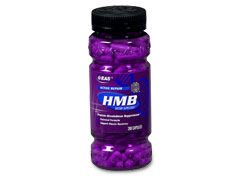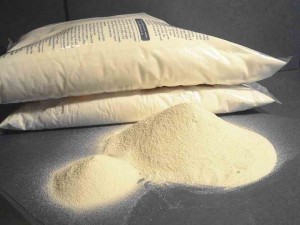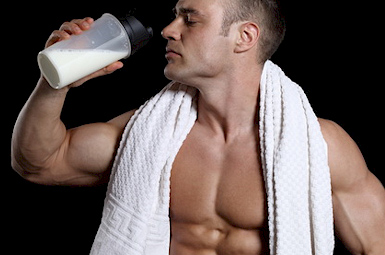Back in the 90’s
I worked for a Canadian distributor of EAS sports supplements. Now this wasn’t the EAS we know today, that of low quality generic products designed for the less than discerning Walmart bargain shopper.
This was the EAS from Back In The Day, when the Phillips brothers were at the helm, Muscle Media was the number one muscle rag on the newsstands, and a plain white powder called creatine monohydrate was the talk of the growing sports supplement industry.

At that time, the industry line on EAS was “high quality but overpriced.” Still, despite the shot to the wallet, customers seemed willing to pay more to get what they perceived was the very best. As such, products like Phosphagen and Myoplex sold like poop through a proverbial goose.
Another product however, HMB, the metabolite of the amino acid leucine, was a slower seller. One reason was that it didn’t deliver the coveted immediate gratification experience like a good tasting protein powder or a loading phase of creatine, or especially like that of 25 milligrams of ephedrine stacked with caffeine.

Another reason was competition — other brands we’re selling HMB for 30% cheaper. And it was hurting.
My bosses opted to stay the course and stuck to their pricing. That is, until another brand came out at 60% cheaper. As in, less than half.
That was the tipping point. By the end of the business week we were sending bottles of the competing brand to a lab in the US for analysis. After all, even if this rogue company were getting the raw materials at cost and giving it away like the Zubaz wearing equivalent of Robin Hood and his merry men, they’d still be losing money.
And no one in the sports supplement industry tolerates losing money.
The results came back as expected – the knockoff may have been 60% cheaper, but it was also 80% filler. (Calcium if I remember right. Though I’m sure it was “highly pure, molecularly-distilled, nano-dispersed calcium.”)
But that was a lifetime ago, when the supplement industry was the Wild West, right?
While I’d like to think things have improved since my heyday, I’m frequently disappointed.

I have a friend who’s a big wheel in supplement formulations.
He’s personally designed many of the top selling products you find screaming at you from the crowded shelves at GNC and Vitamin Shop.
I joke he’s single-handedly responsible for many arguments between cash-strapped teenaged boys looking to get big and their defiant moms who think all these fancy powders are just hocus pocus and repackaged cake mix.
I recently complained to him about supplement companies and proprietary blends, those cheesy bundled formulas in which the amounts of the ingredients are listed as one combined number.

The supplement companies say that they must use proprietary blends to protect their secret sauce from greedy copy-cat competitors, though 9 times out of 10 it’s merely to hide the fact that the formula contains very little of the active or expensive ingredients listed in the formula.
This is nothing new of course, but then my friend laid this doozie on me:
If a supplement company uses proprietary blends, 90% of the time one of the first three ingredients in the blend (likely the most expensive ingredient) is “pixie dust.” In other words, a way less than efficacious dose. Or a fart in a hurricane, for you more rugged types.
Moral of the story? Don’t support companies that won’t tell you exactly what you’re paying for.
Jaded? It gets worse.
Next time you buy a tub of seemingly good quality whey protein powder, take note of the serving size. It’s likely around 20 grams of protein per scoop.

According to my Debbie Downer colleague, a few major – yes MAJOR — brands are now only using about half that amount of protein, and then boosting the nitrogen content with cheap single amino acids like glycine, taurine, and even creatine monohydrate to meet the protein label claim.
Yes, creatine. Cause unlike back in the early days when creatine monohydrate wholesaled at hundreds per kilogram, raw creatine can now be sourced for under 4 dollars per kilogram.
Compare that to about 10 dollars per kilogram for good whey protein isolate and you can see why unscrupulous companies would be tempted.

Bottom line, do your research. Support brands that exhibit ethical practices. Choose professional or practitioner-grade products.
NO BULLSHIT
Some guys just want to look good. Others are willing to learn what it takes. Which guy are you?
Click here to learn more about building the body you want.
Bryan

